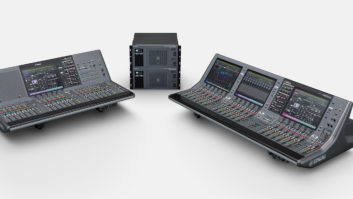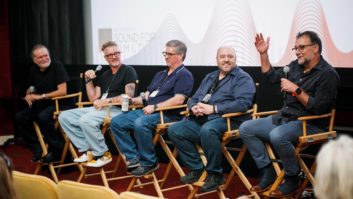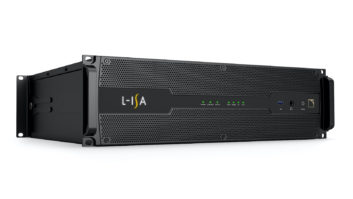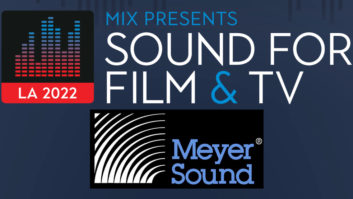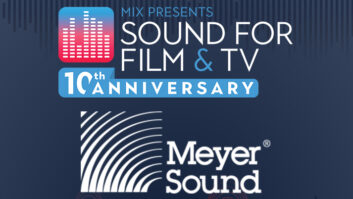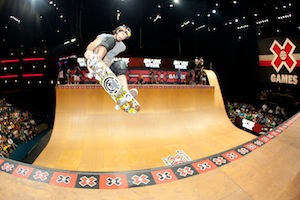
Photo: Matt Morning/ESPN Images
When the first Extreme Games were staged by ESPN at the end of June 1995 at various sites in Rhode Island and Vermont, no one could have predicted that it would evolve into a worldwide phenomenon. There were 27 events spread across nine thoroughly unorthodox sporting categories, such as in-line skating, street luge, skateboarding, bungee jumping, biking and others. The event was so successful on every level that ESPN immediately scrapped its initial plan to stage the Games every two years and made it an annual event with a shortened name: X Games. The first winter competition took place in 1997 at Big Bear Lake in California and inspired new interest and respect for snowboarding, freestyle skiing and other daredevil winter sports.
The X Games have grown steadily since the late ’90s, adding many new events and disposing of others, as it changes to reflect the latest currents in the extreme sports universe. Since 2003, the main summer games have been staged around Los Angeles and the winter competition in Aspen, Colo. But since 1998, there have also been (summer-style) X Games in Asia—Thailand, Malaysia, Korea and China—and for the past four years, winter Games in the Alps in Tignes, France. Beginning this year, there are six X Games sites—Aspen was in January 2013; Tignes in March; Foz do Iguaçu, Brazil, was the stunning backdrop for summer-style games in April; in May, the action shifted to Barcelona; in late June it’s on to Munich; and the first week of August, the X Games season wraps up in L.A. ESPN’s coverage has expanded greatly through the years, and with it, its ratings for what were once considered “fringe” sports.
As you can imagine, putting on and televising the X Games is a mammoth undertaking that involves hundreds of people, both on-site and back at ESPN headquarters in Bristol, Conn. From the outset, sound has always been a critical component in the network’s coverage, but even more so the last several years with the move into a hi-def, 5.1 surround sound world for all sports. Spearheading that side for ESPN—for all its remote events—is Senior Audio Producer Kevin Cleary. When we spoke in mid-April, he had recently returned from the winter X Games in Tignes—which he calls “the only show out of the 2,700 shows a year that I oversee, that I still mix”—and was consulting on the Brazilian X Games coming up that weekend, and, of course, a zillion other telecasts in the short- and long-term. He is one busy dude.

“The X Games is one of my favorite sporting events ever,” Cleary says. “It’s unique, it’s innovative. Some of the things these athletes are doing are so over-the-top and incredible, they are constantly pushing the limits; it’s as cutting-edge as you can get. From a sound point of view it’s tremendously challenging, and we’re always looking for new ways to bring the fan to the experience, put them right there. These days, most people understand the importance of audio—sound really does change how you see television. It’s not as compelling or immersive without good sound.”
Cleary’s road to the top audio supervisorial role at ESPN has included many interesting stops. In his early 20s, the New York native worked in touring live sound, then got a gig as technical production manager for Roseland Ballroom in Manhattan. After that, he did live sound for Broadway musicals, while also transitioning into sound tech for television. His next move brought him into “sports entertainment” with the World Wrestling Federation, which was broadcasting both bands and wrestling shows in conjunction with MTV from a large space in Times Square (which later became the Hard Rock Café). During his tenure with the WWF, he also helped design and build a studio complex at the company’s headquarters in Stamford, Conn.
“I was also starting to do support on some sports shows,” he says, “at the same time as the transition from analog to digital and to 5.1. So I found myself in a niche position where I had the mixing skills and the knowledge of digital audio, in conjunction with the live sound background and an understanding of how 5.1 was being implemented for television.”
In the mid-2000s, Cleary was increasingly plying his skills for ESPN, and by 2005, “I started working with them almost exclusively, with [ESPN senior audio producer and 14-time Emmy winner] Ron Scalise, who had some really interesting ideas and was a pioneer in so many of the things we do [in sports sound]. We worked on some cool projects together, not the least of which was when ESPN got NASCAR back in 2007. We spent a lot of 2006 designing and implementing a digital audio system that would incorporate fiber-optic cable that surrounded the rings of all these tracks, and basically changed the workflow in the TV compound from an old copper workflow to a MADI workflow; trying to go as digital as we could.”

Kevin Cleary
Tragically, Scalise was killed in an automobile accident in December 2007, “and it was a challenge to pick up the torch from where he left off,” Cleary says. “But I think he’d be proud of us and the work we’ve done. In 2008, we did virtually no shows in 5.1 discrete; they were all matrixed. And today, with college basketball just concluding, we’re doing almost all of the 2,700 events we do a year in 5.1 discrete.”
Much of ESPN’s approach to audio for the X Games was developed under Scalise’s direction, but Cleary has made it one of his top priorities, as well, and, as mentioned, the Games themselves are constantly evolving, always requiring new approaches on the audio end.
“When you see a guy coming down a 90-foot ramp on a skateboard, you think, ‘How do I mike this thing? How can I capture that sound?’” he asks. “One of the things Ron came up with is the Xducer, which is basically like a contact microphone, or a pickup. It doesn’t work the way a diaphragm mic would—a push-pull with air. Instead, it takes the vibration and translates that to energy. In France, when those [snowboard] guys would get up on the rails on the slope-style course and grind, you’d really hear it. We worked in conjunction with our French crew, and those guys did a great job of placing the mics. I remember in Year One [four years ago], I was literally on the mountain teaching these guys how to attach contact mics to the rails. But good audio people are good audio people no matter where you are. Wherever you go, you find people who are just as passionate and excited about a new innovative technology and a new innovative sport as you are.” In addition to multiple Xducers, sound for the events comes from microphones mounted on each of the many fixed and roaming cameras providing video coverage—Cleary says the Sennheiser 816 is probably the most commonly employed camera mic.

Audio Control Room 2
Because the X Games are produced by ESPN, the network is deeply involved in choosing the events and has tremendous input into the design of the courses where they take place. As Cleary notes, “They’ll send us a course map showing all the different tricks and features, and we will custom-design what we need for microphones that will go on these features and determine how many mics we need per feature. At the end of the day, for instance, on the slope-style course [in Tignes] we used 27 Xducers on the rails, and add that in with 12 camera mics, so you’re looking at maybe 40 effects mics just for that course.” In Tignes, there was a three-day blizzard that covered the contact mics each night, but, as Cleary says, “the contact mics are much more adaptive to the elements than a shotgun mic with a diaphragm.”
For the summer skateboard big air competition, however, “it’s not uncommon for a big air ramp to have 80 different inputs on it—contact mics that go all the way down the ramp and pick up the skater. One of the interesting parts of the ramp is, after they do their jump and they go onto the other side, there’s a piece of coping on the back end of that and the guys go so fast that they get some board wobble, and when they land, the tail end of the board will hit that coping as they go off it, and it gives out a really unique ring to it. That’s one of the ways you can tell if the guy’s going really fast—you’ll get that ‘ping.’ That’s the type of nuanced sounds we really want to capture, so we’ll have a mic there.”
Another example: “For the rally car racing last year in L.A., we actually buried a tube in the landing and put microphones in it to capture the cars as they came to the other side of the jump.
“Anyone can make the show sound big,” he continues. “The excitement comes from the little nuanced sounds, like a guy strapping his boot down, or when a guy comes off a rail jump and he lands and he grunts that ‘uhhh’ sound. Or if he hurts himself and you hear him groan. Our mics picked up one guy [in Tignes] who landed badly and said, ‘Man, my ankle is definitely not stoked right now,’” Cleary laughs. “Those are the little moments that tell the story. The important thing is not to just make it sound like some huge event, with people cheering and all that. That’s not difficult. The important part to me is telling the story so our viewers are immersed in the action through those nuanced sounds, and giving them more information that way.”
In Tignes, Cleary did his mixing work in an OB (outside broadcasting) van situated at the bottom of the super-pipe and slope-style courses for the winter events. “The uniqueness of Tignes,” he says, “is there’s one venue, so we have one truck to cover both venues and then we have a smaller mobile unit—almost like an ENG van—that utilizes our host set, and in that case our host, Ramona [Bruland], was directed and produced from Bristol. The actual venue is produced locally, so it tosses back and forth and requires quite a bit of coordination. It’s like having two trucks, but one is in Connecticut,” he chuckles.
As the on-site mixer in Tignes, Cleary was juggling all of the mic inputs from the fixed Xducers and multiple camera mics through a Studer Vista 8 console in the OB van, plus dealing with the announcers’ microphones (and not just the English-language ones), all the while worrying about commercial and network inserts added in Bristol, and always keeping in mind both the 5.1 and stereo mixes being uplinked to master control in the U.S.
“In order to create a 5.1 mix that remains true and pristine to the viewer,” Cleary notes, “most microphones are in mono, and usually a mono element in a 5.1 mix will go to the center channel. Well, the center channel has our announcers in it—that’s kind of the most important channel—so having a bunch of microphones stepping on your announcers is not ideal, so you have to utilize a bunch of different devices and some tricks to keep all those mono elements out of your center channel and steer them toward your left front, right front, left rear surround and right rear surround. You want to give the viewer the full experience, but you also want to be able to hear the announcers calling the action. So that’s one of the challenges: While you’re managing 40 effects microphones in conjunction with three different in-house booths and all the ancillary bells and whistles that go into mixing a TV show—music and features and playbacks and graphics noises and whatnot—you have to make sure you keep that center channel pristine.”
Cleary says he is constantly checking the 5.1 and stereo downmix, “and also checking it in mono, just to make sure it’s not collapsing, and you’re still putting out a great show for our viewers who are watching in stereo. A lot of countries aren’t 5.1-ready yet, so they’ll get a stereo or sometimes even a mono mix. Our 5.1 is encoded on-site and sent back to Bristol as an ASI [asynchronous serial interface] stream, decoded in Bristol and then distributed as 5.1 discrete, through our audio control room there, with commercial insertions, back out, and sent to our viewers. It becomes an AC-3 [Dolby Digital] stream for our distribution domestically. One of the beauties of the discrete mix is you don’t have anything that’s lost in the sauce, so to speak.”
The summer X Games have more events and present different obstacles than the winter Games. In the recent Foz Do Iguaçu X Games, for instance, the site had to be built from scratch in what is practically a Brazilian rain forest overlooking the breathtaking Iguaçu Falls, and all the equipment was rented locally and trucked in. At the Barcelona and Munich events, the X Games are using facilities left over from those cities’ respective Olympic Games, so there is at least some foundation in place in advance.
Cleary says they have established certain parameters for the audio equipment in the OB vans, no matter what the locale, but the console or mics they use in one place might be considerably different than what they use in another. And, of course, what might work in the snows of Tignes might not be right for the humid 100-degree heat that scorched the Iguaçu games. The summer skateboard and BMX bike courses also tend to be noisier than the winter slopes, with plenty of loud music and non-stop commentary through the on-site P.A.s—more challenges for whomever is mixing in the truck.
Nevertheless, the ultimate goal is always the same, Cleary says: “We want to put the viewer in the best seat in the house, right in the sweet spot.”
